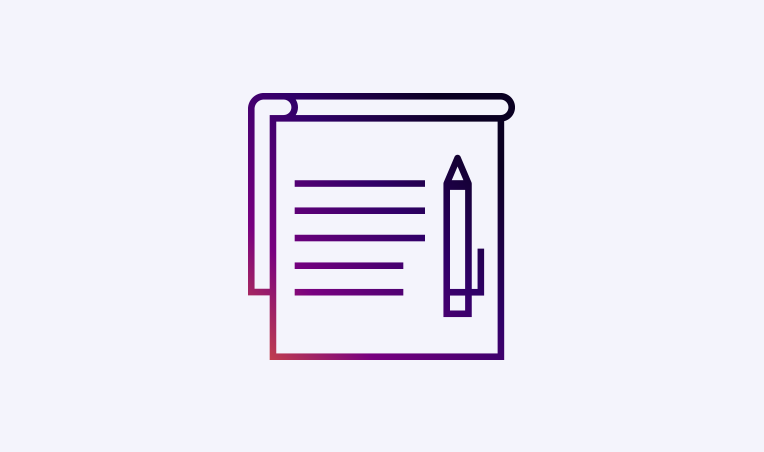Website KPIs: Measurable Indicators of your Site’s Performance
Image

When it comes to improving your website, you need to set clear goals and track key performance indicators. Find out which metrics you should be using and how they impact your site's performance.
Are you hoping to increase your site's conversion rates to sell more products or services? Or are you looking to build a longer email list to keep potential customers in the loop? Maybe you're hoping to rank higher in local searches, or land on Google's first page for relevant keywords. Regardless of your goals, you need to have some sort of tracking system to get a clear picture of your site's current performance, and how this compares with where you want to be.
All successful online marketing campaigns start with the fundamentals. When it comes to improving your site, you need to set clear goals and track key performance indicators (KPIs). KPIs make it possible to figure out what specific metrics determine your site's success. You'll be able to track various aspects of your business to determine its performance over a certain period of time. This not only gives you an idea of where you're at, but this information also makes it easier to determine what areas need more attention.
The strict definition of KPI is a countable metric that measures a site's achievements in regard to predetermined objectives. Here, we'll take a look at the importance of KPIs, and the impact these metrics have on your site in terms of user experience, SEO, and site rankings.
Why Do Website KPIs Matter?
KPIs are a set of trackable metrics used to determine a website’s overall performance over a longer duration of time. KPIs are designed to help site owners create financial, developmental, marketing, and strategic goals. These measurable indicators provide an accurate picture of how your site is currently performing, making it easier to compare with past performance, ideal performance, and the performance of competing sites.
Although KPIs are used in every kind of business, they are especially important and effective when used on websites because of the variety of metrics that can be measured and the ease with which they can be tracked. You can think of running a website without KPIs like driving a car without a dashboard. You might be able to get a rough idea of how you’re performing, but you’ll be missing key indicators that will let you know when you’re driving over the speed limit, running out of gas, driving with a faulty engine, and more.
Defining your Website KPIs
The world of marketing is rife with handy acronyms. Some are catchier than others, but all are designed to make it easier to remember important chunks of information. If your brain isn’t already overflowing with these mnemonics, we’ve got one more for you to consider: SMART.
SMART is usually used to describe goals or objectives that meet a certain list of criteria that can be found when we extend the acronym:
- Specific
- Measurable
- Achievable
- Relevant
- Timely
SMART goals will have all of these characteristics. Let’s take a deeper dive to better understand what each of these descriptors means and why they’re important when selecting your KPIs.
Specific: Before you can make any effective changes to your website, you have to have specific goals and objectives. While everyone wants to “attract more customers” and “sell more services/products,” those aren’t clearly defined enough to develop actionable strategies around. You have to come up with clear and specific goals for what you hope to get from your site. These goals will be your reference point throughout the process.
Measurable: In order to know whether your site is improving or declining in performance, you need to have trackable metrics and a consistent and reputable way to measure changes. This is why using a variety of KPIs is so important. These measurements give you a point of orientation to determine whether certain strategies are working or not, how well they’re working, and how long it takes to reach a certain point. This measurability also makes it easy to compare your site’s performance with the industry standard and competitors.
Achievable: Obviously, every site owner would be delighted to have it outperform all competitors. After all, who in their right mind would turn down millions of visitors each month, 100% conversion rates, insane retention rates, the fastest page loads, and the seamless compatibility? No one! But that doesn’t mean these goals are helpful. It’s important to set your sights on achievable objectives your site can reasonably reach.
Maybe you’re in a smaller niche that just doesn’t get a lot of attention, which puts a limit on the number of visitors you’ll get. Maybe your industry is so competitive that you won’t have a chance to rank for the number one spot. Either way, it’s important to understand what’s an achievable goal and what’s not. Aiming for the impossible ensures you never make it, and shooting for something too easy will only give you a false feeling of success.
Relevant: The KPIs you set for your site should be relevant to your overall goals. For example, if you’re hoping to rank for the front page of Google for a certain search result, you shouldn’t be wasting time worrying about how much traffic is coming from social media platforms like Facebook or Instagram. It’s not that these KPIs aren’t helpful or indicative of a successful site. It’s simply that these metrics don’t give you important information regarding your stated goal. This is another reason why having clear goals is so important. Without having predetermined objectives, you won’t be able to choose relevant KPIs that can measure important metrics to help you achieve that goal.
Timely: Without a strict timeline, you have nothing motivating the improvement of your site. Clear milestones make it easier to create a schedule with actionable tasks. Not only will you have a better overview of what needs to be completed, but you’ll be more likely to implement these changes with a deadline. Even if you don’t have an actual end date for these goals, like a product launch or the opening of a new site, you should still make one on your own. Don’t give yourself so much time that you’ll end up dragging out the execution, but also don’t give yourself too little time that you’re not able to realize your goals.
Achieving your Website KPIs
Here are some common website KPIs, why they're important, and how to measure them.
Page Speed
Page speed refers to the rate at which a website loads. It's an important indicator for a variety of reasons. First and foremost, it can predict the likelihood that users will stick around to interact with your site. For example, if your page speed is longer than 3-5 seconds, there's a good chance that users will exit to find a page with similar content that loads quicker.
While you can always simply visit your site and time how long it takes to load completely, this isn't an accurate or repeatable assessment. Instead, it's important to use a tool like Pantheon’s Website Speed Test to get a precise rating of your site's loading speed. From there, you can determine whether or not it needs to be improved based on your goals.
Conversion Rates
Conversion rates are a common KPI used by site owners as this metric makes it easier to understand how many visitors end up becoming paying customers. Of course, "paying customers" is a broader term used to mean anyone who visits your site and ends up taking an action you're hoping to encourage. This could include:
- Buying a product
- Providing an email
- Signing up for a program
- Paying for a service
Most content management systems should have conversion rates tracked automatically because of their importance. If you know the number of people who visit your site and the number of people who take your chosen "action," then you'll be able to determine this metric on your own. However, if your CMS doesn't provide it, you should be able to download a plug-in to track this information.
Time to Purchase
Although this metric is closely related to conversion rates, it's often overlooked by site owners. While knowing how many visitors end up becoming paying customers is important, it's also critical to understand how long it took to make that transition. This metric lets you know how effective your site is at converting in terms of time, not just numbers.
If you notice that visitors make multiple stops on your site before taking your desired action, this doesn't necessarily mean that your website is underperforming. It's expected that new visitors will require a few visits to get acquainted with your site, to understand what it offers, and to develop a sense of trust. There are a number of reasons for this delay and it shouldn't cause any concern. However, there's an issue if the delay is caused by other issues such as weak marketing messages, a lack of calls to action (CTAs), confusing navigation, or poor page speed. All of these obstacles stand in the way of eager customers and the closure of a deal.
The vast majority of analytics tools will provide a time-to-purchase metric. It's important to use this KPI even if you don't have an eCommerce store. You should still have a good idea of how long it takes a visitor to download an ebook, sign up for your email newsletter, pay for a service, and more.
KPIs and Your Site's Success
All business owners need to set clear goals for their site. With defined objectives, it's easier to determine which KPIs should be measured, tracked, and optimized. This way, you'll have your finger on the pulse of your site's performance, making it easier to determine what strategies are working and which need to be tweaked. By improving these important metrics, you'll see a boost in Google rankings, enhanced user experience, improved site speed, and a wide variety of other advantages.


